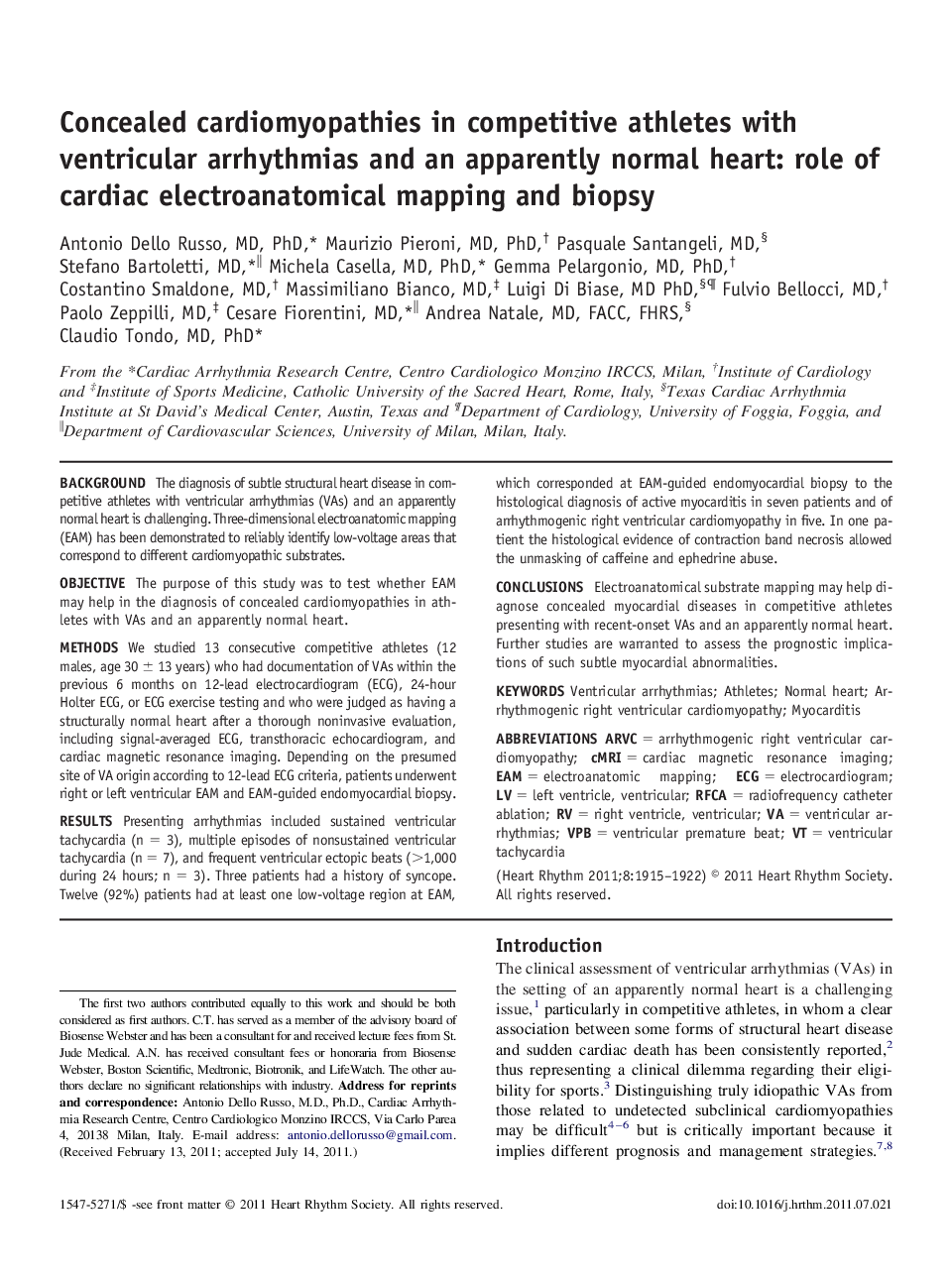| کد مقاله | کد نشریه | سال انتشار | مقاله انگلیسی | نسخه تمام متن |
|---|---|---|---|---|
| 2923048 | 1175862 | 2011 | 8 صفحه PDF | دانلود رایگان |

BackgroundThe diagnosis of subtle structural heart disease in competitive athletes with ventricular arrhythmias (VAs) and an apparently normal heart is challenging. Three-dimensional electroanatomic mapping (EAM) has been demonstrated to reliably identify low-voltage areas that correspond to different cardiomyopathic substrates.ObjectiveThe purpose of this study was to test whether EAM may help in the diagnosis of concealed cardiomyopathies in athletes with VAs and an apparently normal heart.MethodsWe studied 13 consecutive competitive athletes (12 males, age 30 ± 13 years) who had documentation of VAs within the previous 6 months on 12-lead electrocardiogram (ECG), 24-hour Holter ECG, or ECG exercise testing and who were judged as having a structurally normal heart after a thorough noninvasive evaluation, including signal-averaged ECG, transthoracic echocardiogram, and cardiac magnetic resonance imaging. Depending on the presumed site of VA origin according to 12-lead ECG criteria, patients underwent right or left ventricular EAM and EAM-guided endomyocardial biopsy.ResultsPresenting arrhythmias included sustained ventricular tachycardia (n = 3), multiple episodes of nonsustained ventricular tachycardia (n = 7), and frequent ventricular ectopic beats (>1,000 during 24 hours; n = 3). Three patients had a history of syncope. Twelve (92%) patients had at least one low-voltage region at EAM, which corresponded at EAM-guided endomyocardial biopsy to the histological diagnosis of active myocarditis in seven patients and of arrhythmogenic right ventricular cardiomyopathy in five. In one patient the histological evidence of contraction band necrosis allowed the unmasking of caffeine and ephedrine abuse.ConclusionsElectroanatomical substrate mapping may help diagnose concealed myocardial diseases in competitive athletes presenting with recent-onset VAs and an apparently normal heart. Further studies are warranted to assess the prognostic implications of such subtle myocardial abnormalities.
Journal: Heart Rhythm - Volume 8, Issue 12, December 2011, Pages 1915–1922